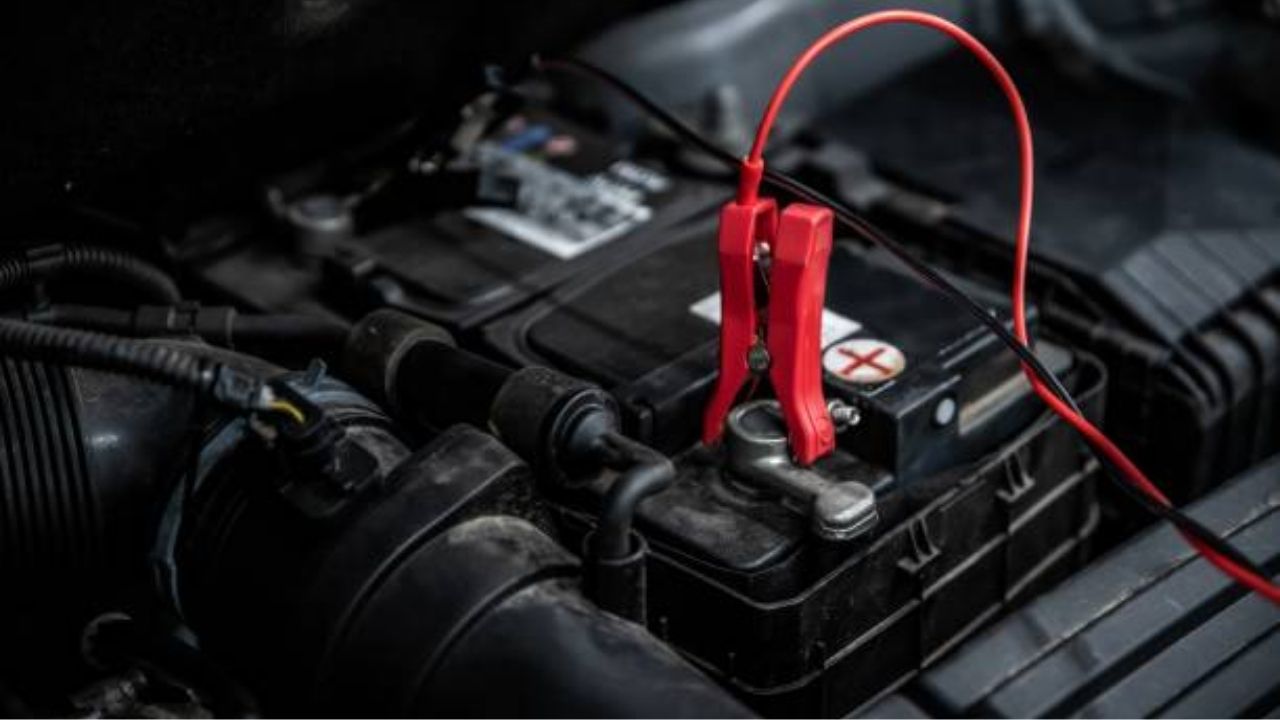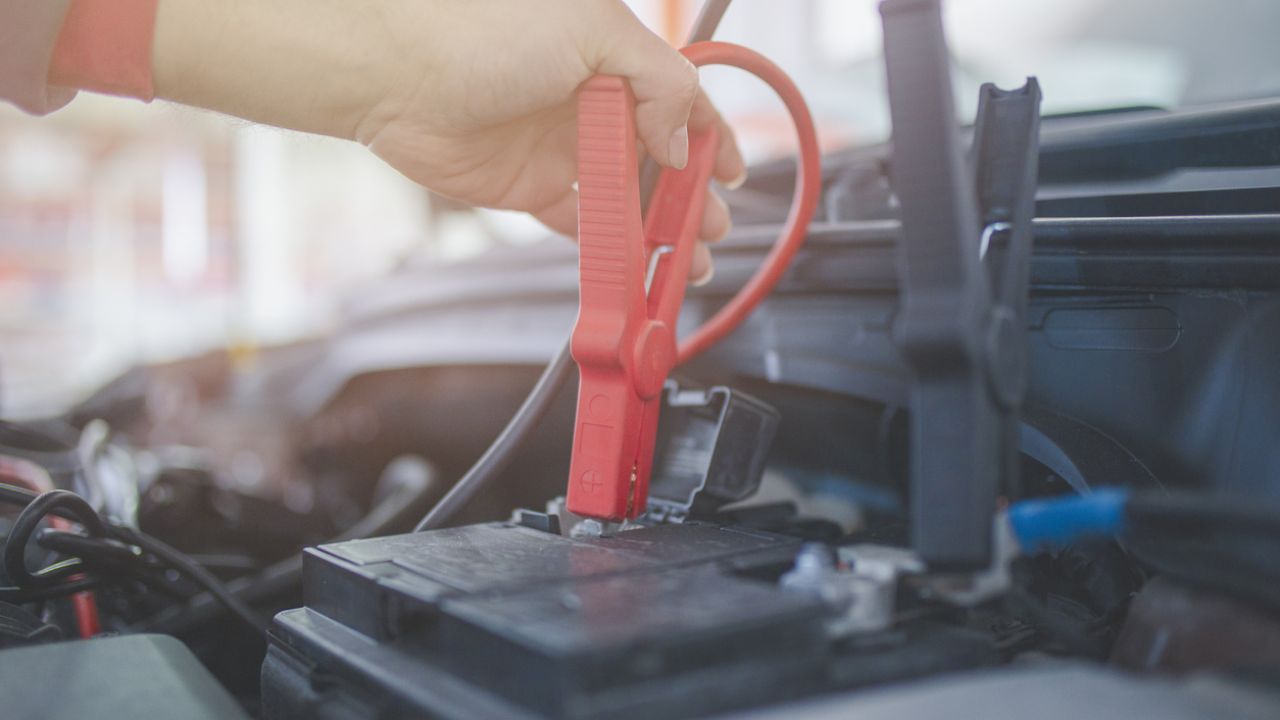How to Charge an AGM Battery: A Step-by-Step Tutorial
The rising popularity of the AGM battery is a testament to its performance. They are low maintenance and do not emit gasses, making them perfect for high-end appliances and modern cars.
However, despite the drastic differences, many people confuse AGM batteries with traditional acid batteries and charge them as usual. But what they undermine is the damage they are causing.
Charging an AGM battery requires a compatible charger with advanced safety features and a thorough process. Here is everything you need to know about how to charge an AGM battery, so dive right in!
What is an AGM battery?
An Absorbent Glass Mat (AGM) battery is the upgraded version of a traditional lead-acid battery. It contains ultrathin fiberglass mats to absorb and move the battery's electrolyte. These batteries are known for their "sandwich" design for the arrangement of lead plates containing fiberglass mats between them.
The AGM battery's unique design distinguishes it from traditional lead-acid batteries. It suspends electrolytes in glass mats, while conventional batteries have free-flowing liquid electrolytes.
What does an AGM battery offer to a user? First, these batteries are highly resistant to vibrations and increased temperatures, making them more durable. Additionally, an AGM battery has a sealed design, eliminating the need to refill electrolytes. It also offers a quicker charging speed with improved, consistent power output, making it suitable for modern vehicles.
One thing to consider is that AGM batteries are more expensive than their traditional counterparts. However, their increased durability, zero refill need, and longer lifespan, make these batteries cost-effective in the long run.
Another aspect that makes AGM batteries more expensive is their sophisticated manufacturing. The design requires premium materials and procedures, adding to the battery's market price.
- Wider discharge temperature range: -4 to 140°F/ -20 to 60°C.
- 2000A (5 seconds) max discharge current to start most appliances.
- 230K+ units sold globally.
How to charge an AGM battery?
If you have no experience charging AGM batteries, take the following safety precautions:
- Ensure you are in a well-ventilated area
- Use eye protection and safety gloves
- Use a compatible AGM battery charger
- Check the battery for any signs of damage
Now that you are clear about safety protocols, here's how to charge an AGM battery:

- Connect your AGM battery charger.
- Now, remove your car battery's negative terminal and wrap it away to avoid contact with metal, leading to an electric hazard.
- Next, you must ensure the charger is set to AGM battery type with 12 Volts of power. If these settings are not by default, change them before proceeding to the next step.
- You can now connect the charger to the battery posts. Make sure to connect the positive terminal first, then the negative.
- Turn on your AGM battery charger. The charging can take 2 to 8 hours, depending on your battery's current status.
- When the battery is charged, you will get an indication light. Then, carefully disconnect the charger from the battery, avoiding any contact between clamps.
- Lastly, reattach the car battery's negative terminal that you previously disconnected. Remove the backup battery, and you are good to go!
Things to know when charging an AGM battery
While charging an AGM battery may seem easy, there are some considerations. Here's everything to keep in mind.
The right voltage and mode
Setting the right voltage for your AGM battery charging can prevent major issues. Set your charger's voltage and modes as follows:
- 4 - 14.7V: for standing charging.
- 6-13.8V: for floating charging (maintenance mode).
The three charging stages
When your AGM battery is charging, it goes through the following three phases:
- Bulk stage: When charging is in earlier stages, the charger provides maximum current. It brings the battery to 80% of its capacity with the voltage rising to 14.7V.
- Absorption stage: The battery starts reaching its full charge, reducing the current. At this stage, the voltage maintains itself between 14.4V to 14.7V.
- Float stage: Once the battery is fully charged, the charger drops its voltage. It helps prevent issues like overcharging while maintaining the voltage at 13.6-13.8V.
The rising temperature
Temperature can play an integral role in affecting your battery's lifespan. So, monitor it while your AGM battery is charging. Make sure to adjust the temperature remains between 32 to 104 degrees Fahrenheit.
Common mistakes to avoid when charging AGM batteries
Knowing how to charge an AGM battery is not all. Here are some common mistakes people make when charging AGM batteries and their impact:
1. Overcharging
Overcharging any electronic component or battery is a big no, and AGM batteries are no exception. When you leave your battery at overcharging, it continuously receives high voltage current, generating heat, decreasing its service life
2. Incompatible charger
We can not stress enough using the right, compatible AGM battery charger. A cheap charger can not detect the specific needs of your battery leading to insufficient charging voltage and modes. Furthermore, the charger might not detect when to start or stop charging, leading to overcharging and undercharging.
3. Undercharging
Prolonged periods of low charge can be as harmful as overcharging your AGM battery. You may be in a hurry and leave your battery undercharged. But doing so creates a layer of sulfate crystals on the battery's lead plates, heavily reducing your battery's capacity and declining its charging capacity.
4. Incorrect charger settings
Even if you are using a smart AGM charger, it is important to set the right settings. Incorrect voltage and charging modes risk damaging the internal components of a battery, leading to permanent damage.
What is an AGM battery charger?

AGM batteries are unique in their design and features. Hence, they require a charger that fits their specific needs. An AGM battery charger fulfills these needs by offering precise voltage regulation.Here's what sets an AGM battery charger apart.
- Multi-state charging: An AGM charger offers three charging stages; bulk, absorption, and float. These stages ensure the battery reaches full charge without overcharging issues.
- Temperature considerations: Absorbent glass mat chargers adjust their voltage based on the temperature, avoiding both cold and hot extreme ends.
- Safety features: The AGM battery itself has a secure design. But, its charger takes things one step ahead by maintaining battery health and avoiding issues like reverse polarity, overcharging, undercharging, etc.
Types of AGM battery chargers
There are two common types of AGM chargers in the market. The first is a basic smart charger, a compact and affordable option with some safety features. These can detect the battery type and adjust its voltage accordingly, making it suitable for occasional AGM battery users.
- Can harness power from your vehicle's starter battery.
- Can utilize MPPT solar charging for efficient energy conversion
- Compatible with LiFePO4, Gel, Flooded, and Sealed Lead Acid batteries.
The second AGM chargers are professional-graded with advanced features like heavy-duty charging modes. A professional-grade charger has quicker charging speeds and premium diagnostics, making it ideal for professional users with higher amperage needs.
- 150V max. solar input offers greater flexibility for DIY projects.
- Versatile compatibility for 12V to 48V systems and various battery types.
How long does it take an AGM battery to recharge?
The charging time of an AGM battery depends on the following factors.
1. Charger amperage (A)
An AGM-compatible higher-amperage charger can charge your batteries quicker due to more current delivery. For example, a 5A charger will have noticeably reduced recharging time than a 2A charger.
2. Battery capacity (Ah)
The battery capacity is measured in Ah (Ampere-hours). A battery with a higher capacity will take more time to charge fully.
3. Depth of discharge (DoD)
A battery with a higher depth of discharge will take longer to recharge. Let's compare two batteries, the first is 40% discharged, while the other is 80%. The first one will recharge due to the second battery's deep discharge rate.
That said, a new AGM battery will require 2-6 hours for recharging with a 10A charger. Its initial charging time can be longer with a lower amperage charger. Alternatively, a battery with a battery that is 80% or 90% discharged can take up to 14 hours.
Here are some tips for optimizing your AGM battery's charging time:
- Follow the right temperature precautions.
- Avoid reaching below 50% DoD (depth of discharge) with regular recharging.
How do I know if my charger can charge AGM batteries?
If your battery charger doesn't have labels like "AGM-compatible" or "Suitable for AGM batteries", it might not be an AGM battery charger. You can also read the product manual to check.
Secondly, check the charger settings. AGM chargers have specialized settings, like different charging modes and battery type selection. Lastly, you can search the specific model online to get more information.
Buying considerations for a new AGM battery charger
Here's everything you need to know about buying a new AGM battery charger:
- Buy a higher amperage charger depending on your battery's capacity for faster charging.
- Invest in a smart charger with safety features like charging profiles, automatic voltage adjustment, overcharging prevention, etc.
- As an occasional user, consider a portable charger to keep your battery charged!
- Go for a charger with temperature monitoring and precautions to prevent overheating.
- AGM batteries vary between 12V, 24V, or 48V. Choose a charger that fits your battery's voltage rating.
Power up with lithium: Fast, lightweight batteries
Upgrading from AGM batteries to lithium batteries offers numerous benefits for modern energy needs. Lithium batteries are lighter, more compact, and last significantly longer, making them ideal for extended use and frequent cycling. They charge faster and maintain a stable voltage, providing consistent performance even under high demand. With higher energy efficiency and minimal maintenance requirements, lithium batteries are a cost-effective and eco-friendly choice in the long run. To better understand lithium batteries vs AGM batteries, check out our detailed comparison article for a deeper dive into their advantages.
- Lighter than ever at 55.1 lb.
- 5-year warranty. Certified by FCC, CE, ROHS, UKCA, and more.
- Grade-A prismatic LiFePO4 cells offer 5000+ cycles at 80% DOD.
Conclusion
Charging an AGM battery might not be challenging but finding the right charger needs several considerations. Prioritize chargers with advanced safety features to ensure your battery has a longer lifespan. Avoid charging mistakes to get the best results from your AGM battery.
Remember that regular care and maintenance can keep your battery efficient, making your purchase cost-effective. Mistakes that may look minor, like overcharging, can heavily impact your battery's overall health.
FAQs
Can I charge an AGM battery with a regular charger?
While some regular chargers may allow charging your AGM battery, it is not recommended. AGM batteries have specific charging needs that only a specialized charger can fulfill. Hence, using a regular charger can cause problems like overcharging, undercharging, incorrect voltage, inadaptability to temperature, etc.
What is the best way to charge a new AGM battery?
The best way to charge a new AGM is by following your manufacturer's instructions. If your charger is not set to the right AGM settings, you can do it manually according to your battery type. Charge it in a safe power outlet with a temperature between 32 to 104 degrees Fahrenheit.
Can a completely dead AGM battery be recharged?
In some cases, yes. It depends on your battery's condition as many people confuse deeply discharged batteries as dead. A battery discharged deeply to the point where it may not store a charge can be recharged with some tweaks. Alternatively, a completely dead battery has sulfation beyond repair and issues like internal shorting. Such batteries can not be recharged.











